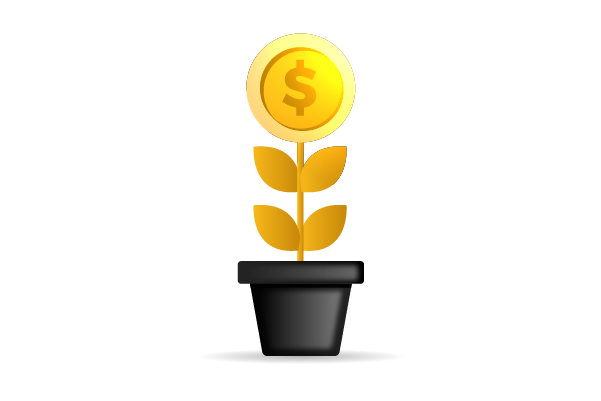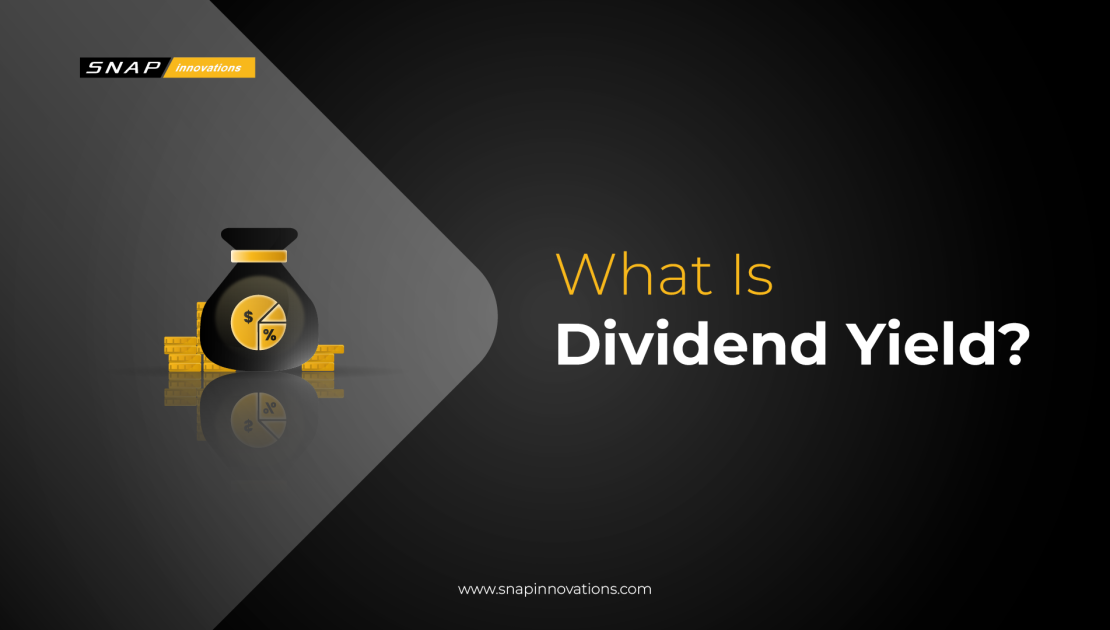If you’re an investor or someone looking to invest, you’ve probably heard of the term “dividend yield” thrown around in financial discussions. It’s an essential concept in the world of investing, and understanding it can significantly impact your investment decisions. In this article, we’ll delve deep into what dividend yield is, why it matters, and how to calculate and interpret it.
Investing is not just about growing your wealth; it’s also about securing your financial future. Whether you’re saving for retirement, planning for your child’s education, or simply seeking to build wealth over time, making informed investment choices is crucial. That’s where dividend yield comes into play.
It’s not just a buzzword; it’s a vital tool that can help you make smarter investment decisions, potentially leading to a more comfortable and financially secure future. In the following sections, we’ll break down the concept of dividend yield, explore its significance in investment strategies, and provide you with the knowledge needed to navigate the world of income-oriented investing with confidence. So, let’s embark on this journey together and uncover the wealth-building potential that dividend yield offers.
What Is Dividend Yield?
Dividend yield is a crucial financial metric that stands at the intersection of income and investment. It represents a fundamental aspect of investing that directly impacts your ability to generate returns from your investments. Essentially, dividend yield is a ratio that reveals how much income you can expect to earn from an investment relative to its cost.
To put it simply, when you invest in stocks, you’re buying a piece of ownership in a company. Some companies, instead of reinvesting all their profits back into the business, distribute a portion of those profits to their shareholders in the form of dividends. Dividends are typically paid out on a per-share basis. Now, dividend yield comes into play by comparing the annual dividend payment per share to the current market price per share.
Why does this matter? Well, imagine you’re choosing between two stocks: Company A, which pays an annual dividend of $2 per share, and Company B, which pays only $1 per share annually. At first glance, it might seem like Company A is the better choice for income investors. However, if Company A’s stock price is $40 per share, and Company B’s stock price is $20 per share, the dividend yield for Company A is 5% ($2 / $40 x 100%), while Company B’s dividend yield is 5% as well ($1 / $20 x 100%). In this scenario, both companies offer the same dividend yield, making them equally attractive for income-seeking investors.
Understanding this fundamental concept is essential because it empowers you to make informed decisions about where to allocate your capital in the stock market. It enables you to gauge the income potential of different investments and assess their suitability for your financial goals. Whether you’re aiming to build a passive income stream, save for a specific life goal, or preserve and grow your wealth, dividend yield is a critical tool in your investment toolkit. In the following sections, we’ll explore why dividend yield matters, how to calculate it, and what factors can influence it. So, let’s continue our journey into the world of dividend yield and discover its significance in the realm of finance and investment.
Also Read: Data Mining: How it Works?
Why Does Dividend Yield Matter?
Dividend yield matters primarily because it serves as a valuable yardstick for investors to gauge the income potential of a specific stock or an entire portfolio. For income-oriented investors, especially retirees or those seeking to generate passive cash flow, dividend income can be a crucial component of their financial strategy.
A high dividend yield implies that you could potentially earn a substantial return on your investment in the form of regular dividend payments. This is particularly appealing if you rely on your investments to cover living expenses or supplement your income. By considering the dividend yield, you can identify stocks or investments that have the potential to provide a consistent income stream, aligning your financial objectives with your investment choices.
However, it’s important to note that a high dividend yield doesn’t always equate to a good investment. This is where the second aspect of why dividend yield matters comes into play. A stock’s dividend yield is influenced not only by the dividend payment but also by the stock’s market price. If a company’s stock price has experienced a significant decline, the dividend yield may appear deceptively high. While a high yield can be enticing, it may also signal underlying issues within the company, such as financial instability or market skepticism.
Thus, dividend yield acts as a balancing act between the potential income and the risk associated with the investment. It encourages investors to dig deeper, evaluating both the yield and the overall health of the company before making investment decisions. In essence, it helps investors strike a balance between seeking income and preserving capital, making informed choices in the complex world of finance.
How to Calculate Dividend Yield?
 Calculating dividend yield is relatively straightforward. You need two pieces of information: the annual dividend per share and the current market price per share. To calculate it, use the following formula:
Calculating dividend yield is relatively straightforward. You need two pieces of information: the annual dividend per share and the current market price per share. To calculate it, use the following formula:
Dividend Yield = (Annual Dividend per Share / Current Market Price per Share) x 100%
For example, if a company pays an annual dividend of $2 per share, and its stock is currently trading at $40 per share, the dividend yield would be (2 / 40) x 100% = 5%.
The Importance of Dividend Yield in Investing
 When it comes to investing, understanding dividend yield is crucial because it offers several benefits. Let’s explore why it matters and how it can impact your investment strategy.
When it comes to investing, understanding dividend yield is crucial because it offers several benefits. Let’s explore why it matters and how it can impact your investment strategy.
Steady Income Stream
One of the most compelling reasons why dividend yield is of paramount importance in investing is its role in providing investors with a reliable and steady income stream. In an ever-changing financial landscape, the allure of regular dividend payments cannot be overstated. For income-oriented investors, such as retirees or those looking to supplement their earnings, stocks with high dividend yields can act as a dependable source of cash flow.
Unlike the unpredictability of capital gains, dividends offer a degree of financial stability. They arrive like clockwork, putting money in the pockets of shareholders, month after month, quarter after quarter. This steady stream of income can help individuals cover living expenses, fund retirement lifestyles, or simply enjoy a sense of financial security. Therefore, understanding dividend yield allows investors to identify and embrace opportunities that align with their income needs and aspirations.
Indicator of Financial Health
Another compelling reason to appreciate dividend yield lies in its ability to serve as a valuable indicator of a company’s financial health. Companies that consistently pay dividends are often regarded as financially stable and profitable entities. Why? Because only companies with a solid earnings track record can afford to distribute a portion of their profits to shareholders regularly. This means that when you invest in stocks with a history of dividend payments, you are indirectly gaining insight into the financial well-being of the underlying company.
However, it’s not just the presence of dividends that matters; it’s the consistency and growth of these payouts over time that signal financial stability. On the flip side, a sudden or steep drop in dividend yield can be a red flag. It may indicate financial difficulties or challenges that the company is facing. In such cases, investors need to exercise caution and conduct further due diligence to understand the company’s financial health before making investment decisions.
Total Return on Investment
Dividend yield plays a crucial role in assessing the total return on investment (ROI). When evaluating an investment, you should consider both capital appreciation (changes in the stock price) and income (dividends received). While dividend yield is not the sole determinant of total return, it contributes significantly to the overall investment performance.
For instance, if you own a stock that not only appreciates in value over time but also pays regular dividends, you are benefiting from a more comprehensive return on your investment. This dual advantage can enhance your overall financial gains, especially in the long term. Therefore, understanding the impact of dividend yield on the total return allows investors to make more informed decisions and potentially optimize their investment portfolios for a balanced mix of growth and income.
Risk and Dividend Yield
Lastly, it’s essential to recognize that a high dividend yield can sometimes be a double-edged sword, signifying risk as much as reward. When a company’s stock price experiences a significant decline, its dividend yield may rise proportionally. This can make the stock appear attractive from a yield perspective. However, this apparent attractiveness may mask underlying problems.
High dividend yields often occur when the market questions a company’s financial stability, which can lead to a decline in the stock’s price. Thus, it’s crucial for investors to not rely solely on high yields as an indicator of investment quality. Instead, a comprehensive assessment that considers both the yield and the underlying fundamentals of the company is necessary to make sound investment decisions. By understanding this relationship between risk and dividend yield, investors can navigate the market with a more discerning eye, balancing their quest for income with prudent risk management.
Factors Affecting Dividend Yield
 Understanding dividend yield isn’t just about knowing how to calculate it; it’s also crucial to recognize the factors that influence it. Here are some key factors that can impact a company’s dividend yield:
Understanding dividend yield isn’t just about knowing how to calculate it; it’s also crucial to recognize the factors that influence it. Here are some key factors that can impact a company’s dividend yield:
1. Company Earnings
A company’s ability to pay dividends depends on its earnings. When a company’s earnings increase, it may choose to increase its dividend payments, which can lead to a higher dividend yield.
2. Dividend Payout Ratio
The dividend payout ratio is the proportion of earnings a company pays out as dividends. A higher payout ratio indicates that a company is distributing a significant portion of its earnings to shareholders, resulting in a higher dividend yield.
3. Stock Price Fluctuations
Stock price fluctuations can have a direct impact on dividend yield. If a company’s stock price falls while its dividend remains the same, the dividend yield will increase, making the stock appear more attractive from a yield perspective.
4. Market Sentiment
Investor sentiment and market conditions can influence dividend yield. In uncertain economic times, companies may reduce or eliminate dividends, leading to a lower yield.
Strategies for Investing in Dividend Yield Stocks
Investing in dividend yield stocks requires careful consideration and strategy. Here are some strategies to help you make informed investment decisions in this area:
Diversification: Diversify your dividend yield investments across various sectors and industries to spread risk. Avoid putting all your money into a single high-yield stock, as it may be more volatile.
Focus on Dividend Growth: Look for companies with a history of increasing their dividends over time. These companies often have strong financials and are committed to rewarding their shareholders.
Evaluate Dividend History: Examine a company’s dividend payment history to see if it has a consistent track record of payouts. Consistency can be a sign of stability.
Assess Financial Health: Analyze a company’s financial statements, debt levels, and cash flow to ensure it can sustain its dividend payments. A high yield is less attractive if it’s unsustainable.
Risks Associated with Dividend Yield Investing
While dividend yield investing offers many benefits, it’s essential to be aware of the potential risks involved. Here are some risks associated with this investment strategy:
Interest Rate Risk: Dividend yield stocks can be sensitive to changes in interest rates. When interest rates rise, high-yield stocks may become less attractive, causing their prices to decline.
Market Volatility: High-yield stocks can be more volatile than growth stocks, as they may be influenced by economic conditions and investor sentiment.
Dividend Cuts: Companies can cut or eliminate dividends during challenging times. This can lead to a decline in the stock’s value and a reduction in income for investors.
Tax Consideration: Dividend income is typically taxed, so it’s important to understand the tax implications of your dividend yield investments.
Read Next: Crypto Protocols: Building Blocks of Digital Finance
Conclusion
In conclusion, dividend yield is a critical concept for investors seeking income from their investments. It provides insight into a stock’s income potential and can be a valuable tool for building a portfolio that generates passive income. However, it’s essential to understand the factors that influence dividend yield, the associated risks, and the strategies for successful dividend yield investing. By doing so, you can make informed investment decisions that align with your financial goals and objectives. Happy investing!

